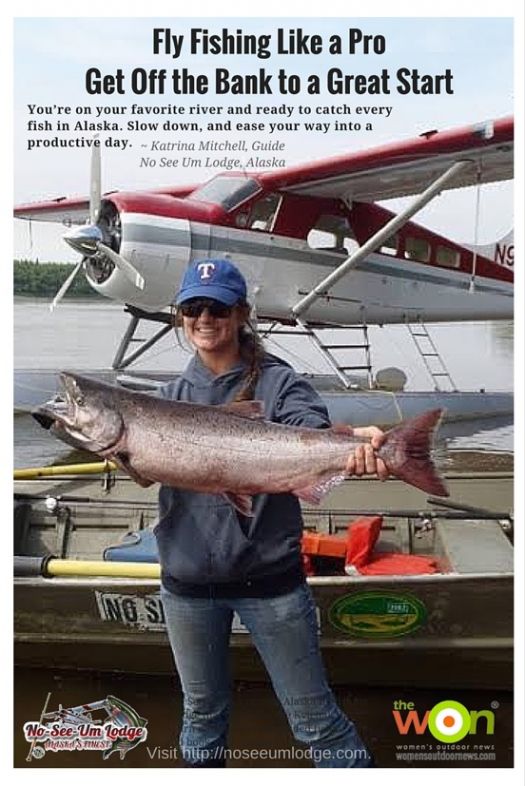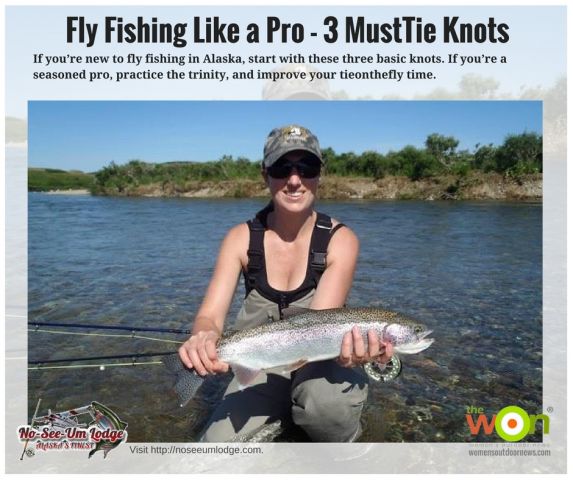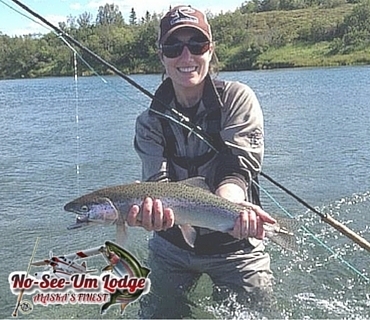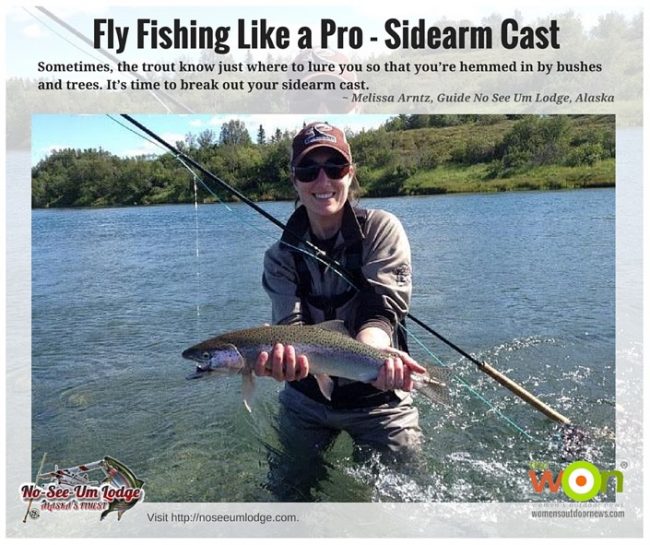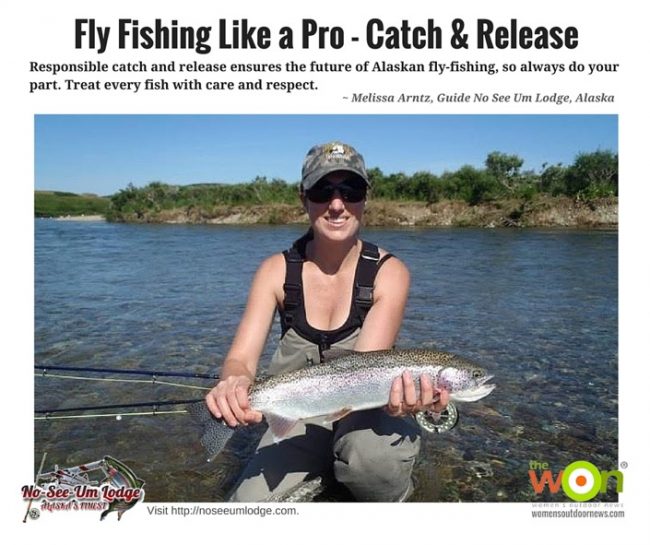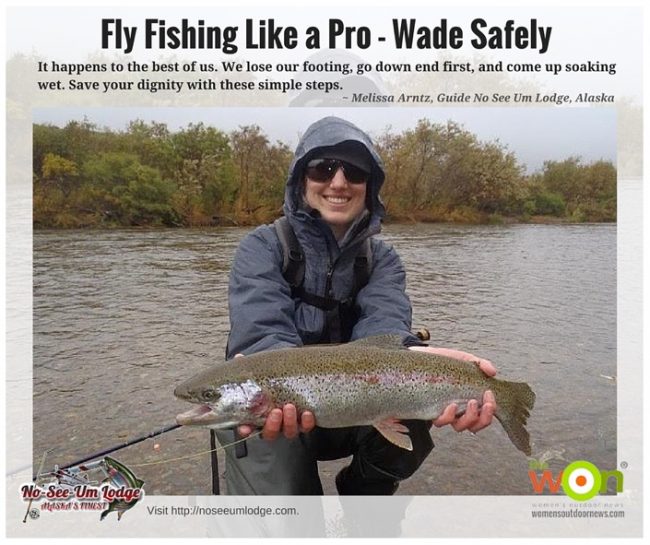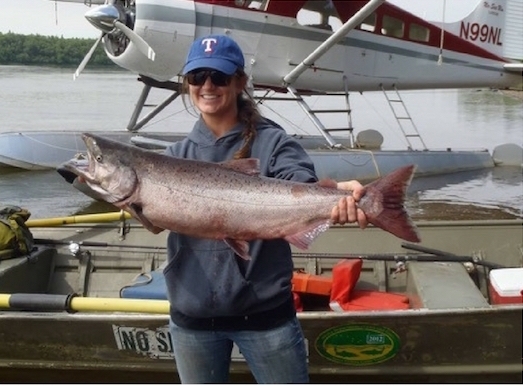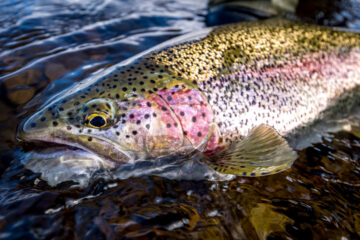We recently partnered with Woman’s Outdoor News to showcase some of our best tips for successful fly fishing. These cover a variety of fly fishing tips to help you cast better, fish smarter and advance your fly fishing.
Here’s the full breakdown!
Getting Off to a Great Start:
You’re on your favorite river and ready to catch every fish in Alaska. Slow down, and ease your way into a productive day.
- Fish are easier to catch when you can see them. Polarized sunglasses let you spot potential strikes under the brightest sun-kissed waters.
- Take in the lay of the land and the river. Check your clearance, size up the shade, and scan for seams. Let the water and air dictate your fly selections.
- Sneak up on the fish. They spook at the sight and sound of waders, so ease into position without splashing, and then start slowly stalking.
Three Must-Tie Fishing Knots
If you’re new to fly fishing in Alaska, start with these 3 basic knots. If you’re a seasoned pro, practice the trinity, and improve your tie-on-the-fly time.
- Improved Clinch Knot: It’s easy, it’s fast and it gives you 95% of your original line strength. This is your classic knot for attaching light tippets to small flies.
- No-Slip Loop Knot: Does that fly need a little more action in the drift? Alaskan fly-fishing guides recommend this knot with larger lines.
- Double Surgeon’s Knot: When you need to connect different-sized lines, go with this quick and easy tie. It’s bulky, but it lets you size your tippet to suit your fly.
Mousing Tips for Trout
Who knows why rodents fling themselves off riverbanks? Just take advantage of big rainbows’ appetites for little 4-legged swimmers. Go mousing for trout.
- Natural mouse action starts up against the bank. Present your giant, dry fly to fish tucked in and under. It’s an enticement they usually can’t refuse.
- Trust ‘bows for excellent eyesight. They’ll move out to your mouse, so reel them in with a strip-and-swing combo. You’ll cover more water, catch more fish and have more fun.
- Mousing takes patience. That’s the hard part. Wait for the closed mouth and the turned head, and then set the hook. Otherwise, wave goodbye to that trophy trout.
Prepare Yourself for Rain
You can count on a few rainy days, but be prepared for all of them. A little wet weather can’t chase you off the water when you’re prepared with quality rain gear.
- Gore-Tex still beats the competition as your best waterproof fabric choice. Its lightweight and breathability keep you flexible and comfortable.
- Go with a wading jacket. The shorter length keeps you from taking on water, and oversized pockets give you plenty of room for fly boxes and hand warmers.
- Layer on the right materials. Slip a quick-dry, long sleeve shirt over a T-shirt made from the same material. This strategy helps you stay dry regardless of the weather.
Avoid Snags with a Sidearm Cast
Sometimes, the trout know just where to lure you so that you’re hemmed in by bushes and trees. It’s time to break out your sidearm cast.
- Imagine that you’re casting arcs at 11 o’clock and 1 o’clock on the ground, as you look down at them and the backside of your reel.
- Carefully gauge clearance, and then turn sideways as you cast with the same power and range that you’d put into an overhead cast.
- You’re flipping the fly sideways, so be ready to quickly mend the line. This technique doubles as an effective slack-line cast, too.
Practice Catch-and-Release
Responsible catch and release ensures the future of Alaskan fly-fishing, so always do your part. Treat every fish with care and respect.
- Invest in a quick-release tool that helps fish avoid line tangles while your hands and flies stay dryer. When the action explodes, you’ll really appreciate this tool.
- You have to handle that fish to get your picture of a lifetime, so do it with landing gloves. They improve your grip and his recovery.
- That salmon’s fighting for his life. How do you safely get a powerful fish off the hook? Turn him upside down to disorient and calm him.
Wade Safely and Avoid Slips
It happens to the best of us. We lose our footing, go down end first, and come up soaking wet. Save your dignity with these simple steps.
- Avoid backing up. When you wade sideways or forward, you’re in better control of your balance and more likely to recover from a slip.
- As you move from shallows into deeper water, sidestep with a wide stance. This lets you feel the bottom as you move and maintain stable footing.
- Your safest substrates are always gravel or sand. Cobbles tend to be slick with algae while mud bottoms pose a real slipping hazard.
The Eyes Have It!
The votes are in and affirmative for making sure that your fly fishing adventures are easy on the eyes. Set your sights on these strategies for enjoying a sunny day on the water.
- Invest in quality shades. Polarized wrap-arounds stay put through the wildest action, protect your eyes from UV rays and always look cool.
- Supersize your focus with a clip-on magnifier. The hinged, rectangular viewer attaches to your hat brim and gives you flip-down access to clearer vision for detail work.
- Zip your tippet through the rod’s smallest eye with a sight-saving fly threader. This little tool really comes in handy during low-light sunrises and sunsets.
There are, without question, thousands of other tips to throw out there for discussion so keep the list going in the comment section!
